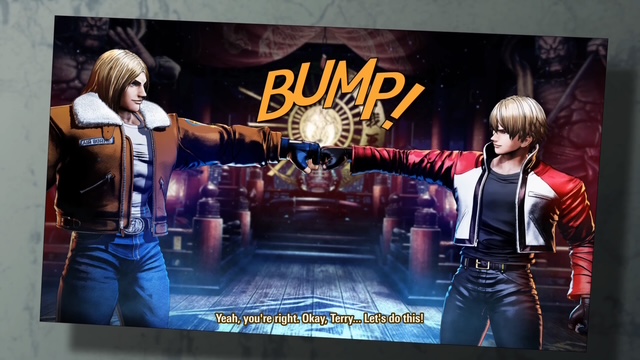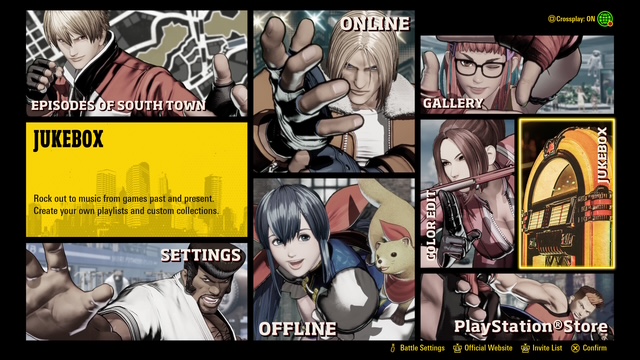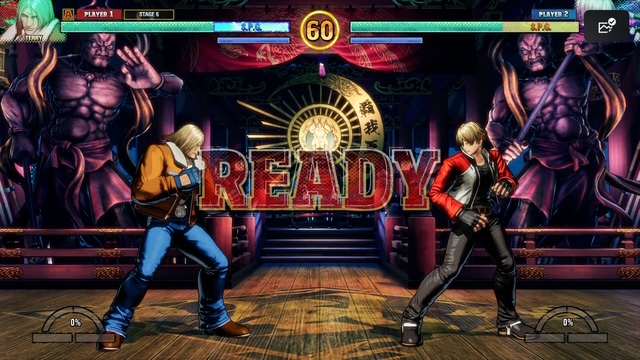Fighting games have entered a new golden age, with popular video game companies such as Capcom and Bandai Namco Games releasing some excellent titles that have drawn veterans and newcomers back into the fold. Popular franchises such as Street Fighter, Tekken, and Mortal Kombat have gotten new sequels in Street Fighter 6, Tekken 8, and Mortal Kombat 1 respectively, seeing a “fighting game renaissance” that has led to more exciting matches and events that have led to some interesting collaborations and promotions that haven’t been seen since the 1990’s when these properties were at their prime and thriving in the scene.
One company that has also secured their place in the genre and has slowly rebuilt their fanbase is SNK. Known for their King of Fighters games that saw the latest installment, KOF XV, released a couple of years ago, the company has had its fair share of popular franchises such as Art of Fighting, Samurai Shodown, and Fatal Fury – which was the brain child of video game designer and creator of the original Street Fighter, Takashi Nishiyama. The latter series was a direct competitor to Capcom’s signature brawler throughout the 1990’s, so it comes as no surprise that the company was ready to resurrect the franchise and release the long awaited follow up in “Fatal Fury: City of the Wolves” – the seventh entry in the series that continues the story of a new generation of fighters led by new blood Rock Howard and the legendary Terry Bogard – the longtime hero of the Fatal Fury series who is undeniably SNK’s fighting game mascot and one of the most iconic characters not just in fighting games but in video game history.
As a direct sequel to 1999’s “Garou: Mark of the Wolves”, City of the Wolves retains much of what made its predecessors popular by focusing on storytelling and character presentation, while adding some new gameplay mechanics and modern day embellishments to keep up with today’s fighting game trends. Presented in a beautiful 2.5D graphics powered by the Unreal Engine 4, the game plays very much like Street Fighter 6 – with combat taking place between two selected fighters in a two-dimensional plane. One stage in the game however uses the “two-lane system” where fighters can jump to and switch lanes during the fight – serving as a nod and throwback to past Fatal Fury titles that incorporated the mechanic during matches.






One of the major additions to the game is the “Rev System” – which similar to Street Fighter 6’s “Drive System” adds a new set of offensive and defensive tools to a player’s arsenal and can change the tide of battle if used effectively during a fight. Using different sets of Rev skills such as “Rev Arts” and “Rev Blow” can enhance attacks and put some distance between fighters, while “Rev Accel” allows for combos to be chained and finally “Rev Guard” helps push attackers away after successfully blocking them. Using the Rev system too much however will fill up a separate meter called the Rev Gauge, and if it reaches 100% that will bring the character into an Overheat state – where they can’t use Rev abilities for a certain period and opponents can land chip damage when attacks are blocked.
Also from Mark of the Wolves is the “Just Defense” mechanic which allows players to recover a small sliver of health when blocking attacks. A new expanded “Hyper Defense” mechanic has also been incorporated to deal with multiple attacks and hits from opponents. The T.O.P. system has been renamed as the S.P.G. or “Selective Potential Gear” – which players can highlight to a certain area on their character’s life bar and, once activated, grants them access to new skills and life recovery. Super moves are represented with the “Gear” system – with two bars that represent two different levels of super moves that can be executed using the correct input method and strength of attack pressed. A “Hidden Gear” move is also available when the player’s character is on “S.P.G.” mode and both bars are used, leading to one very devastating super attack that deals a lot of damage when the character successfully hits their opponent.
In terms of characters City of the Wolves has a diverse line-up of fighters to select and choose from, with 17 making up the base roster while five more characters are coming as downloadable content for the first season of the game. Each fighter has their own set of moves and techniques that can only be utilized effectively depending on a player’s skill set, and fortunately for newcomers City of the Wolves also adopts two “Styles” of play – with Arcade Style using more traditional fighting game controls for veterans, while Smart Style is aimed for beginners and those who want to use simple directional inputs and buttons to perform special moves and combos.
Taking place two years after Mark of the Wolves, majority of that game’s roster such as Rock, Terry, Tizoc, Gato, Hokutomaru, and Hotaru return, while fan favorites such as Mai Shiranui and Billy Kane make their comeback while brand new characters such as Preecha and Vox Reaper make their debut in this game. The strangest addition and probably the most controversial are the inclusion of real life footballer Cristiano Ronaldo and DJ Salvatore Ganacci. Their presence in the game doesn’t really mesh well with the mainline Fatal Fury roster, but they’re there because of sponsorship deals and, despite looking out of place, actually have their own interesting set of moves and skills for those looking for wacky characters to mess around with in the game.
Aside from Arcade where players can play through a character’s story, City of the Wolves introduces “Episodes of South Town” – a single player mode that has RPG mechanics that allows players to choose a character and complete missions to level up and earn experience points. Playing this mode will also grant rewards such as extra outifts and color patterns that can be used to customize characters in Color Edit mode. Additionally, there is the standard offline modes like Versus and Training, as well as online multiplayer that supports crossplay with other platforms and has rollback netcode. Players can also cycle through a Jukebox mode to listen to their favorite tracks and customize it to listen during battles in the game, and after finishing a character’s story – new artwork and cutscenes become available in the game’s Gallery mode.
While certainly not the only classic brawler to make a comeback and bring some new innovations with it, Fatal Fury: City of the Wolves delivers a satisfying sequel that powers on and wraps up the cliffhanger storyline Mark of the Wolves lefts fans with over twenty years ago. While the learning curve is tough and modes of play seem relatively simple, this is a fighting game sequel that fans of the Fatal Fury franchise have been waiting to sink their teeth into – and personally I came out satisfied and hungry for more action. The upcoming first year of DLC fighters coming to the game will actually include Street Fighter’s own Ken and Chun-Li – bringing the crossover collaboration between Capcom and SNK full circle since Terry and Mai are also featured and currently playable in Street Fighter 6. If there was ever a time to dive back into the world of fighting games, now is the time. Much like the theme song of the game – this sequel literally starts a Chain Reaction of potential new sequels and spin-offs that fans worldwide can look forward to in the future.



